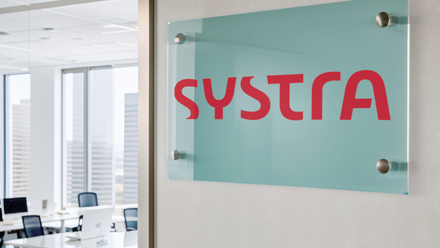Manual Handling, Train the Trainer (Morgan Maxwell)
About the course
This course equips trainers with the skills to deliver safe and effective manual handling training, focusing on risk reduction through demonstration, assessment, and safe lifting techniques.
Who should attend?
This course is designed for individuals responsible for delivering manual handling training within their organisation, including health and safety officers, team leaders, supervisors, and in-house trainers. It is ideal for those who need to understand the principles of safe manual handling and effectively communicate and demonstrate these practices to others. Participants should have a basic understanding of workplace health and safety and be confident in leading small groups through practical training sessions.
Why should you attend?
Clients should attend this course to ensure their trainers are fully equipped to deliver effective, engaging, and legally compliant manual handling training within their organisation. With a strong focus on reducing the risk of musculoskeletal disorders (MSDs), the course provides practical tools and techniques—such as the BELT framework—for identifying risks, demonstrating safe lifting methods, and fostering a proactive safety culture. Attendees will gain a deep understanding of manual handling legislation, real-world case studies, and hands-on assessment techniques, enabling them to tailor training to specific workplace needs and improve overall safety performance. This course is essential for any organisation committed to reducing manual handling injuries, meeting legal obligations, and promoting long-term employee wellbeing.
What will you learn?
By completing this course, clients will earn the knowledge, skills, and confidence needed to deliver high-quality manual handling training within their organisation. Specifically, they will:
- Gain a comprehensive understanding of manual handling risks and how to reduce them through effective training and practical demonstration.
- Develop the ability to assess tasks using the BELT framework, identifying posture, environment, load, and task-related risks.
- Understand key legislation and regulatory requirements, including UK, EU directives and OSHA guidelines, ensuring legal compliance.
- Enhance their training delivery skills, with techniques for engaging diverse learners and promoting a strong safety culture.
- Receive a CIEHF certificate of completion, confirming their capability to train others in safe manual handling practices in line with industry standards.
This course provides not just theoretical knowledge, but practical tools that can be immediately applied to improve safety outcomes and reduce injury risks across the workforce.
Expected outcomes
By the end of the course, participants will be equipped to confidently deliver engaging and effective manual handling training tailored to their workplace environment. They will have a strong understanding of the key risk factors contributing to manual handling injuries, be able to conduct basic risk assessments using the BELT framework, and demonstrate safe handling techniques.
Participants will also be familiar with relevant legal requirements and best practice guidelines, enabling them to support compliance and drive a positive safety culture. Ultimately, they will leave the course prepared to reduce injury risks, improve staff awareness, and contribute to a safer, more efficient workplace.
Course content
This course provides a comprehensive overview of manual handling and prepares participants to deliver effective training within their organisations. It begins with an introduction to manual handling principles and the role of a trainer in promoting a proactive safety culture.
Participants will gain an in-depth understanding of musculoskeletal disorders (MSDs), their causes, symptoms, and long-term effects. The course explores key manual handling risk factors, supported by real-life case studies, and provides an overview of relevant legal frameworks, including EU directives and OSHA regulations.
Practical sessions focus on safe manual handling techniques using the BELT framework (Body & Behaviour, Environment, Load, Task), with hands-on assessments and problem-solving exercises. The course concludes with an action planning session, equipping attendees with the tools to apply their learning in real workplace scenarios and lead effective, compliant manual handling training.
Assessment
Delegates are assessed through a combination of practical and interactive activities designed to evaluate their understanding and application of course content. This includes participation in a structured risk assessment exercise, where delegates apply the BELT framework to analyse real-world manual handling tasks. In addition, they will take part in practical demonstrations, showcasing safe lifting techniques and training delivery skills. Group discussions and problem-solving sessions provide further opportunities to assess comprehension and the ability to adapt techniques to different scenarios. Trainers will offer feedback throughout, ensuring delegates are prepared to confidently deliver manual handling training in their own workplace.
What’s included?
The course includes all training materials, practical tools, and resources needed to support delegates in delivering effective manual handling training.
This covers a comprehensive course workbook, printed guides on manual handling legislation and the BELT framework, and access to real-world case studies for discussion.
Delegates will also receive practical assessment templates, trainer delivery tips, and a certificate of completion upon successful participation.
About Morgan Maxwell:
Morgan Maxwell is a Chartered Institute of Ergonomics and Human Factors (CIEHF) approved consultancy, recognised for its expertise in workplace ergonomics, human factors, and health and safety training. With a team of Chartered Professionals, each with over 20 years of experience, Morgan Maxwell delivers evidence-based, industry-aligned solutions that reduce injury risks and improve performance.
The company works across a wide range of sectors—including manufacturing, healthcare, pharmaceuticals, construction, and transport—supporting organisations to meet regulatory requirements and build safer, more productive working environments. Our training and consultancy services are trusted by leading global brands and tailored to meet the specific needs of each client.
Find out more





